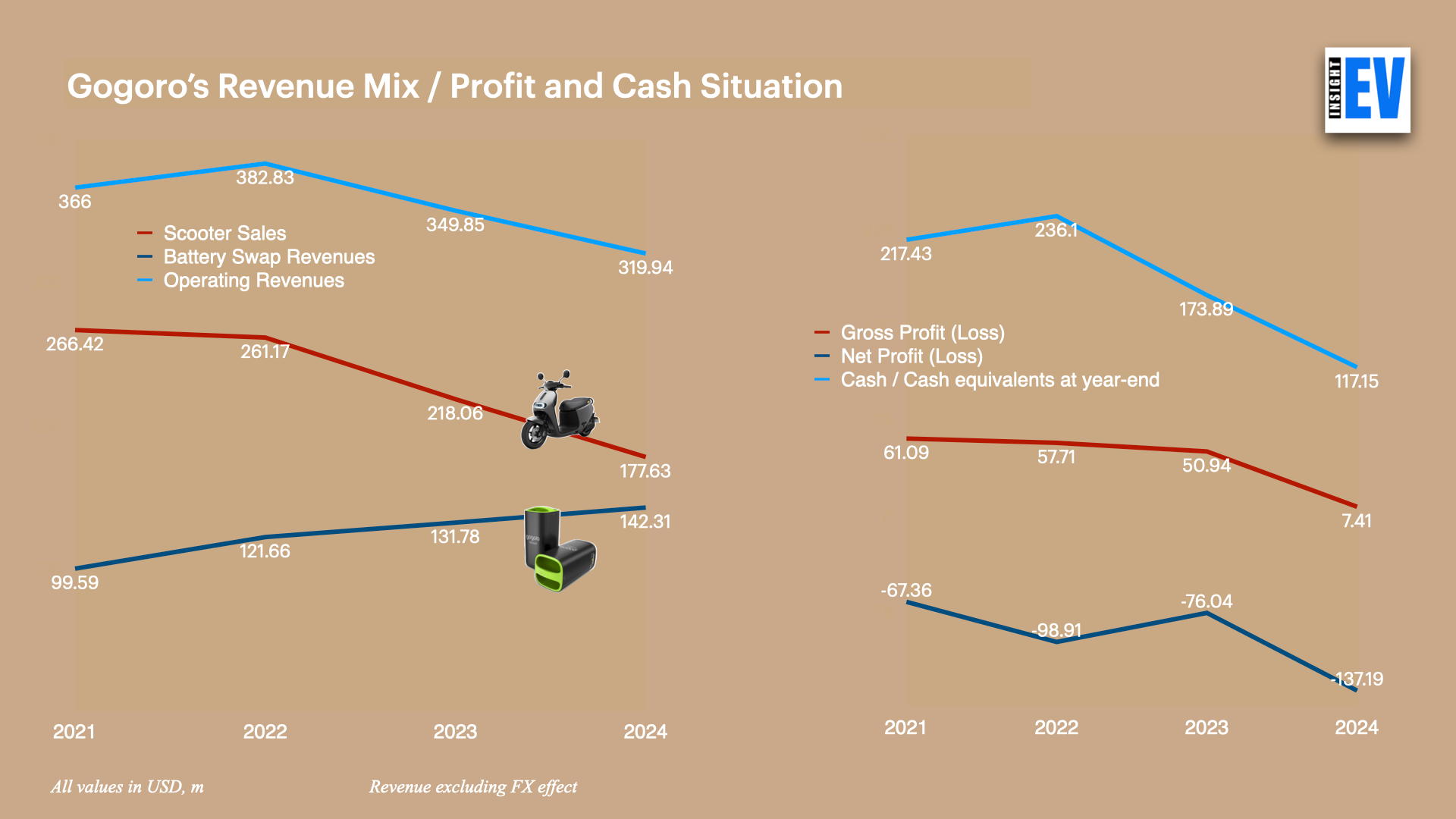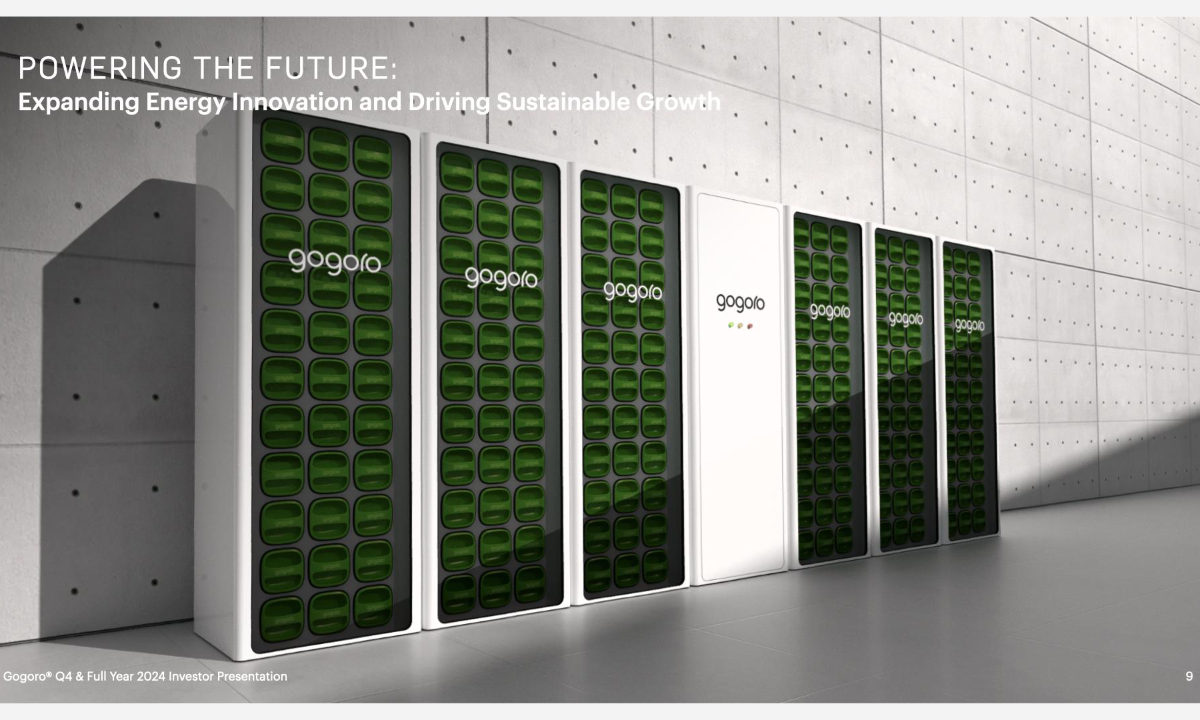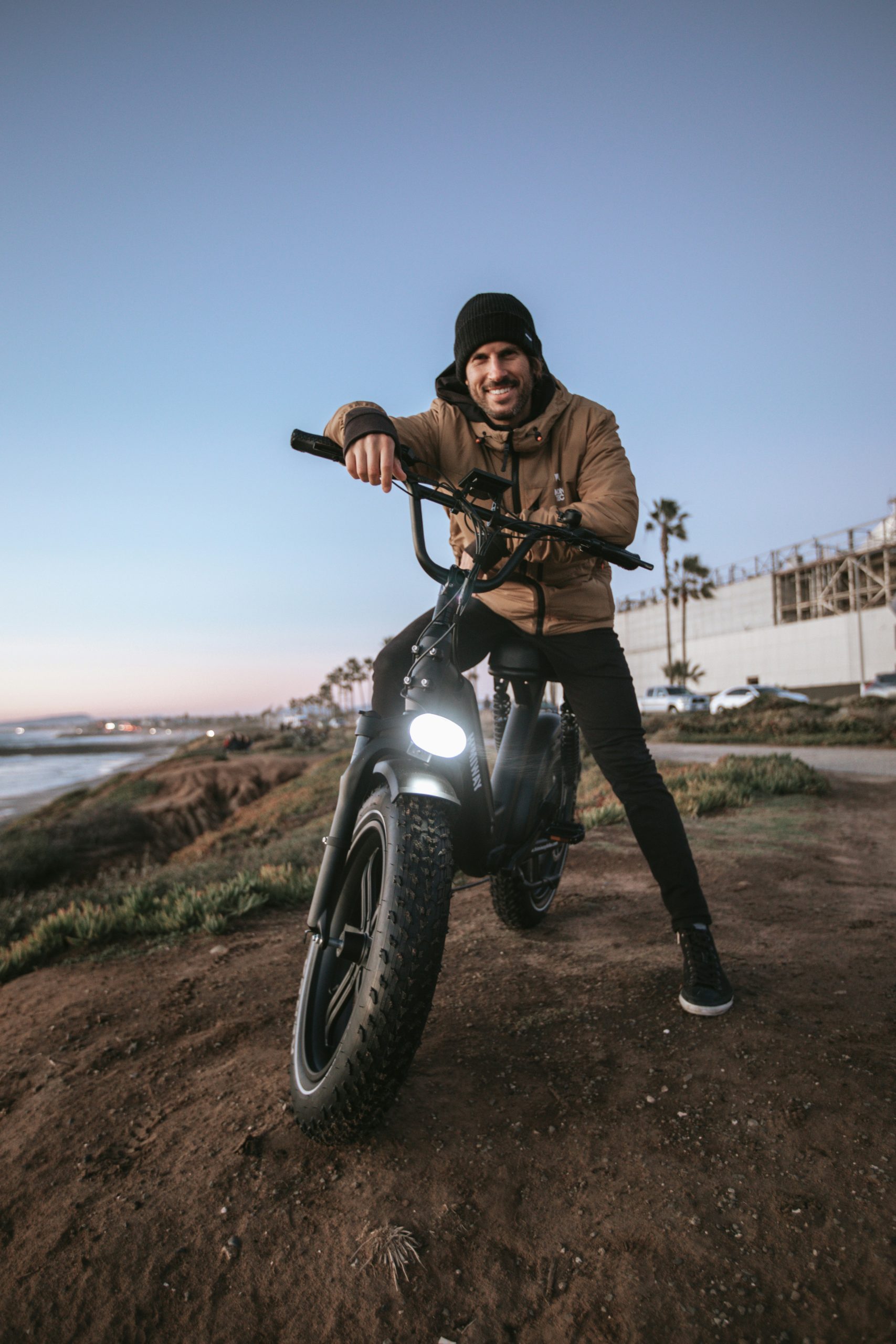When we first analyzed (in July 2024) Gogoro, we questioned the overall business model. Specifically, the company puts energy (battery swapping) sales ahead of scooter sales, compromising the entire equation. This is what we wrote:
Gogoro’s business strategy clearly shows that it is first an energy company and then a scooter company. The argument for an energy company business works best if you own the back end, like what BYD has done or what India-based Ola plans to do to a lesser extent. There can be no efficient energy company that does not make its own cells and, ideally, pluck Lithium out of the earth. Gogoro’s cells come from high-quality global suppliers—Panasonic, LG Energy Solution, and Samsung—with the same quality levels in sourcing as we would expect any high-quality electric scooter brand to do anywhere.
Except it does not provide any comprehensive edge.
Link to the analysis:
So, when we looked at Gogoro’s 2024 financial release yesterday, it was no surprise that the company’s performance is still declining. Despite the company’s claims of turning breakeven on energy business in 2026 and scooter sales in 2028, we remain pessimistic.
The Key Metrics
- For the full year 2024, Gogoro reported revenue of USD 310.5m, down 11.2% year-over-year and 8.5% year-over-year on a constant currency basis. The company added that it was hit by adverse currency rates, and had foreign exchange rates remained steady with the average rates in each of the comparable quarters of last year, revenue would have been up by an additional USD 9.4m.
- Within the above, scooter sales (reported as sales of hardware) continue to decline steadily. For 2024, they were USD 172.6m, down 20.8% year-over-year (down 18.5% on a constant currency basis).
- Battery swapping revenues continue to improve as the vehicle parc using Gogoro’s swapping services continuously increases. Battery swapping service revenue for the year was USD 137.9m, up 4.6% year-over-year (8.0% increase on a constant currency basis).
- Gogoro expects swapping revenues to surpass vehicle sale revenues on a full-year basis in 2025. That is pretty much what we will see if we extend the Red and Indigo lines below.

- The company says they took one-time accounting charges of over USD 38m against “simplifying and strengthening the business.”
- For 2024, the net loss was USD 123.2m, a 62% jump from a net loss of USD 76.0m last year. The company attributed this to a USD 43.5m decrease in gross profit, driven by costs related to our battery upgrades, an increase of impairment loss of USD 32.6m, USD 3.3m related to exit activities, and USD 1.6m of customer care package costs.
- For the fourth quarter, revenue was USD 73.0m, down 20.2% year-over-year (19.2% on a constant currency basis). This included scooter sales revenue of USD 37.1m, down 37.0% year-over-year(down 36.5% on a constant currency basis). Battery swapping service revenue for Q4 was USD 35.9m, up 10.2% year-over-year (12.3% on a constant currency basis).
- At the end of the year, Gogoro has 640k subscribers on the Gogoro network. A year back, they had 587k subscribers.
- Capex remains at about USD 100m per year.
The problem with scooter sales
Gogoro has a broad portfolio of products and has introduced three new products within the last 12 months – the Pulse at the premium end and the Jego and CrossOver in the mass market. The Taiwan market seems to be declining and moving downwards in transaction prices, which puts pressure on Gogoro’s product mix.

Taiwan accounts for the majority of Gogoro sales. Based on absolute hardware sales revenues in 2023 and 2024, we estimate that transaction prices have declined from USD 3470 per scooter to about USD 3370.
The Nasdaq Delisting Looms
We first mentioned this in November 2024.
With steady losses comes the problem of a falling share price, and there is a point where you start hitting the barrier called Nasdaq Listing Rule 5450(a)(1). On Oct 29th, Gogoro received a notice from NASDAQ indicating that for the last 30 consecutive business days, the closing bid price of the Company’s ordinary shares was below the minimum bid price of US$1.00 per share requirement outlined in Nasdaq Listing Rule 5450(a)(1). This does not impact share trading for now, and Gogoro has 180 days to rectify the problem. The management stated that they expect a solid financial plan and outlook that will improve Gogoro’s share price. However, they did mention inorganic steps to be taken if the share price does not recover, as the NQ listing is of utmost importance.
Gogoro continues to trade well below USD 1.00, and the deadline for compliance is Apr 28th, 2025. The management seemed confident that the market would recognize and reward the financial discipline and focus on core energy strengths.
Gogoro is now leaner and more nimble with a new efficient operational model that positions us for sustained long-term growth with a path to profitability. We have also refocused on our core energy strengths including our battery swapping subscriber growth, optimizing our vehicle cost structure and significantly reducing fixed overhead expenses.
-Henry Chiang, interim CEO of Gogoro
We don’t share the confidence. Financials are still deteriorating and Gogoro is still a prominent player in the global E2W industry because it raised significant private capital early in the early days.
Cash situation
From USD 236m in cash at the end of 2024, Gogoro has seen a significant erosion to USD 174m in 2023 and USD 117.15m at the end of 2024. This is despite the fund-raise from Castrol (invested USD 25m in June 2024) and Gold Sino Assets (invested USD 50m in June 2024).
We are not in a severe trouble zone yet, and the company is confident that the cash will be enough to implement its business strategy.
Takeaways
Gogoro continues to have a business model that focuses more on energy (battery swapping) than hardware. That’s a pity, considering Gogoro perhaps has the best product development and engineering team in the business.
With many Gen-1 batteries reaching ten years of life, Gogoro’s business has a new dimension – deploying second-life batteries as energy storage solutions. We do not have precise numbers around this business area as they are rolled into the battery-swapping revenue.
The Taiwan market for ePTWs is in decline, which is worrying for Gogoro. Despite improving its market share, the absolute sales numbers continue to decline.
Besides the declining sales numbers, the product mix is deteriorating. We estimate a 10% lowering of average transaction prices per scooter for Gogoro.
Apart from Taiwan, it seems unlikely that Gogoro would be able to develop any significant markets. It is controlling its operations in China, India, and the Philippines to control costs and not going aggressive with network rollouts.



